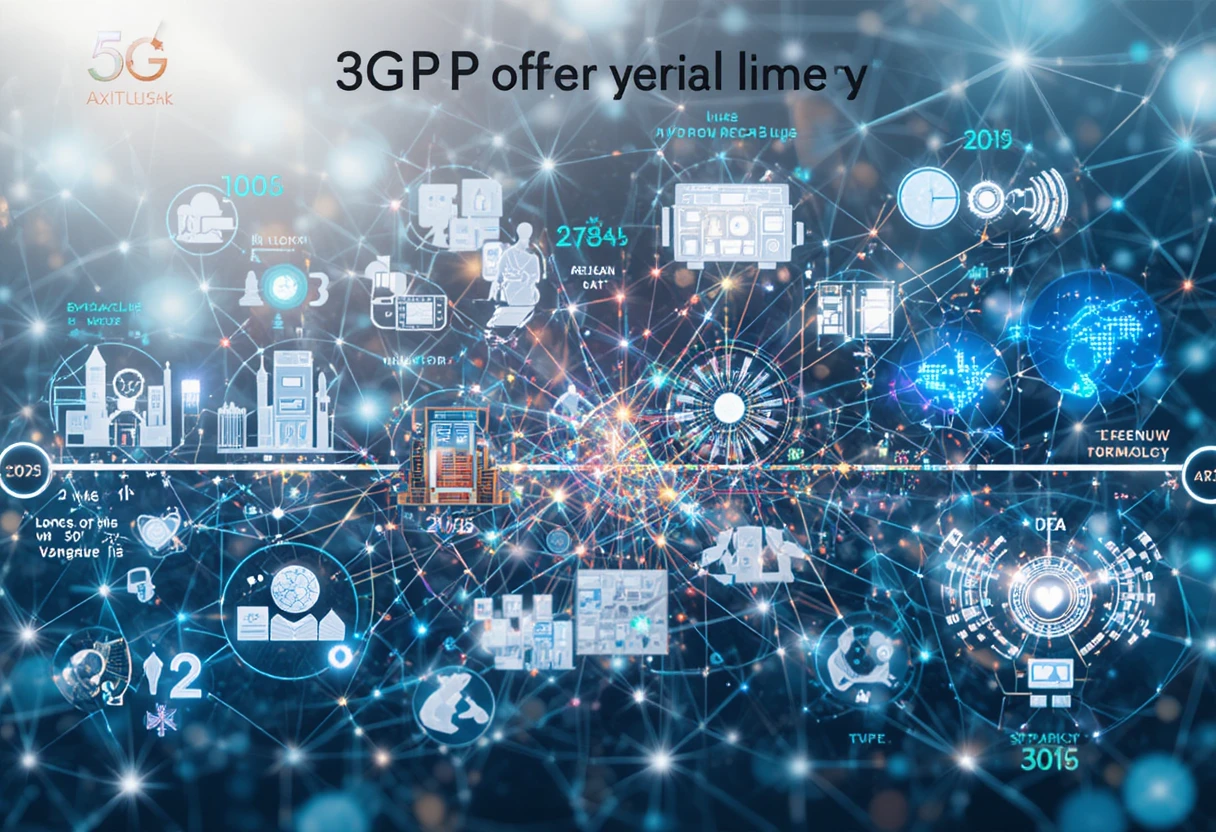Thought for 50s
5G Technology: Revolutionizing Connectivity in the Digital Age
5G technology represents the fifth generation of wireless cellular networks, ushering in an era of unprecedented speed, reliability, and connectivity that is reshaping industries, economies, and daily life. Launched commercially in 2019, 5G builds on the foundations of previous generations but introduces transformative capabilities, including data speeds up to 10 Gbit/s, latency as low as 1 millisecond, and the ability to connect up to one million devices per square kilometer. By October 2025, 5G has achieved global adoption with over 2.25 billion connections, growing at a rate four times faster than 4G, and is integral to advancements in AI, IoT, and edge computing. This post provides a detailed exploration of 5G’s fundamentals, evolution, mechanics, applications, advantages, hurdles, current landscape, and future trajectory, highlighting its role as a foundational technology for the connected world.
What Is 5G Technology?
5G is the latest standard in mobile network technology, designed to deliver faster data transfer, lower latency, and greater capacity compared to its predecessors. Unlike 4G, which focused primarily on mobile broadband, 5G is engineered as an end-to-end ecosystem that supports diverse use cases, from enhanced mobile broadband (eMBB) for streaming and gaming to ultra-reliable low-latency communications (URLLC) for mission-critical applications and massive machine-type communications (mMTC) for IoT devices. The International Telecommunication Union (ITU) defines 5G under the IMT-2020 framework, specifying minimum requirements like peak data rates of 20 Gbit/s downlink and 10 Gbit/s uplink, though real-world averages are around 186-430 Mbit/s depending on the region.
At its core, 5G operates across three frequency bands: low-band (sub-1 GHz) for wide coverage, mid-band (1-6 GHz) for balanced speed and range, and high-band (mmWave, 24-71 GHz) for ultra-high speeds in dense areas. This spectrum diversity allows 5G to adapt to various environments, from rural areas needing broad coverage to urban centers requiring high throughput. The technology is standardized by the 3rd Generation Partnership Project (3GPP), with Release 15 (2018) establishing the initial non-standalone (NSA) mode that relies on 4G infrastructure, evolving to standalone (SA) in Release 16 for full 5G core networks.
5G’s service-based architecture (SBA) uses software-defined networking (SDN) and network function virtualization (NFV) to create flexible, scalable networks. This enables network slicing, where a single physical network is divided into virtual segments tailored to specific needs, such as low-latency slices for autonomous vehicles or high-bandwidth ones for video streaming. Compared to 4G, 5G offers up to 100 times more capacity, making it essential for the exploding number of connected devices—projected to reach 21 billion IoT endpoints by 2025. In essence, 5G is not just faster internet; it’s a platform for innovation, enabling technologies like remote surgery, smart cities, and immersive AR/VR experiences.
History and Development of 5G
The development of 5G is a story of collaborative innovation, driven by the need for faster, more reliable wireless communication in an increasingly digital world. Early research began in the late 2000s, as 4G networks were still rolling out. In 2008, NASA partnered with Machine-to-Machine Intelligence (M2Mi) to explore nanosatellite applications, laying groundwork for IoT integration in future networks. By 2012, institutions like NYU Wireless and the University of Surrey’s 5G Innovation Centre advanced mmWave research and secured funding from industry giants like Huawei and Samsung. The ITU-R’s Working Party 5D initiated IMT-2020 studies in 2013, setting the stage for global standardization.
The 2013-2018 period focused on trials and standards. Samsung achieved 1 Gbit/s over 2 km using 8×8 MIMO in 2013, while NTT Docomo and Huawei conducted early field tests. The 3GPP’s Release 15 in 2018 defined the first 5G New Radio (NR) standards, enabling non-standalone deployments. Commercial rollout accelerated in 2019, with South Korea leading the charge on April 3, offering nationwide coverage through carriers like KT, LG Uplus, and SK Telecom using equipment from Samsung, Ericsson, Nokia, and Huawei. Verizon launched limited services in the US the same day, followed by AT&T and others. By 2020, T-Mobile introduced the first nationwide standalone 5G network.
The 2020s saw rapid expansion amid the COVID-19 pandemic, which highlighted 5G’s role in remote work and telehealth. Ericsson projected 65% global population coverage by the mid-2020s. Key suppliers like Huawei (leading with 70% of global base stations by 2023), Ericsson, Nokia, and Qualcomm drove hardware advancements. Geopolitical tensions, such as US restrictions on Huawei in 2019, influenced supply chains, promoting diversification. India’s 5Gi standard for rural coverage was merged into 3GPP Release 17 in 2021. By 2025, 5G-Advanced (Release 18) introduces AI/ML for network management and extended reality support, marking the transition toward 6G. This history reflects a collaborative effort among governments, academia, and industry to build a connected future.

How 5G Works: A Technical Overview
5G’s technical prowess lies in its innovative architecture and spectrum utilization, enabling superior performance over 4G. At the foundation is the 5G New Radio (NR) air interface, which uses orthogonal frequency-division multiple access (OFDMA) for efficient spectrum sharing. 5G divides coverage into small cells—femtocells for homes, picocells for venues, microcells for urban areas, and macrocells for wide coverage—to optimize signal strength and capacity. Massive MIMO (Multiple Input Multiple Output) employs antenna arrays with 64 or more elements to serve multiple users simultaneously, boosting spectral efficiency by up to 100 times.
Beamforming directs radio signals precisely toward users, reducing interference and extending range, especially in mmWave bands. Non-orthogonal multiple access (NOMA) allows users to share frequencies by allocating different power levels, enhancing capacity. Channel coding shifts from 4G’s turbo codes to polar codes for control channels and LDPC for data, improving error correction. The 5G core (5GC) is a software-defined, service-based architecture that separates control and user planes, using RESTful APIs for interoperability. Key functions include AMF for mobility, SMF for sessions, and UPF for data routing.
5G operates in FR1 (sub-7.125 GHz) for coverage and FR2 (mmWave) for speed, with bandwidths up to 400 MHz in high bands. Latency is minimized through edge computing, processing data closer to the source. Integration with Wi-Fi via LAA and LWA shares unlicensed spectrum, while non-terrestrial networks (NTN) use satellites for remote areas. Adaptive modulation and coding schemes (MCS) ensure low block error rates (BLER), supporting applications requiring reliability. In practice, a 5G device connects to a base station, which routes data through fiber or wireless backhaul to the core network, enabling seamless handoffs and slicing for customized services.
Key Applications of 5G Technology
5G’s enhanced capabilities unlock a myriad of applications across sectors, driving efficiency and innovation. In autonomous vehicles, 5G’s low latency enables vehicle-to-everything (V2X) communication, allowing cars to share real-time data for safer navigation and traffic management. Smart factories leverage 5G for industrial automation, with massive IoT connectivity supporting sensor networks for predictive maintenance and robotic control, reducing downtime by up to 50%. In healthcare, 5G facilitates telemedicine and remote surgery, where ultra-reliable connections transmit high-definition video and haptic feedback, enabling operations from afar.
Smart cities use 5G for intelligent infrastructure, such as traffic lights that adjust in real-time to reduce congestion or sensors monitoring air quality and waste management. The entertainment sector benefits from immersive experiences, with 5G supporting lag-free AR/VR streaming for virtual concerts or gaming. In agriculture, 5G-enabled drones and precision farming tools optimize irrigation and crop monitoring, boosting yields by 20%. Logistics sees improvements through connected supply chains, with 5G tracking assets in real-time for efficient delivery. Public safety applications include enhanced video surveillance and push-to-talk for first responders. Fixed wireless access (FWA) provides broadband to underserved areas, bridging the digital divide. Overall, 5G’s applications span eMBB for consumer broadband, URLLC for critical systems, and mMTC for IoT, fostering a connected ecosystem.

Benefits of 5G Technology
5G offers profound benefits that extend beyond speed, catalyzing economic and societal progress. Its primary advantage is ultra-high data rates—up to 10 times faster than 4G—enabling seamless 4K/8K streaming and rapid downloads, enhancing user experiences in media and gaming. Low latency (under 10ms) supports real-time applications like remote control of machinery or augmented reality, reducing error rates and improving precision in industries like manufacturing. Greater bandwidth accommodates more devices, crucial for IoT ecosystems where billions of sensors operate simultaneously without congestion.
Economically, 5G is expected to add trillions to global GDP by enabling new business models, such as smart supply chains that cut logistics costs by 15-20%. In healthcare, it facilitates telehealth, potentially saving billions in costs through remote consultations. Environmental benefits include optimized energy grids that reduce consumption by 10-15% via smart metering. Socially, 5G bridges divides by providing high-speed internet to rural areas via FWA, improving education and access to services. Enhanced security features, like better encryption, protect data in connected environments. Overall, 5G fosters innovation, with projections of 65% global coverage by the mid-2020s driving a more efficient, connected world.
Challenges and Limitations of 5G
Despite its promise, 5G faces significant challenges that could impede widespread adoption. Infrastructure costs are a major hurdle; deploying small cells and fiber backhaul requires substantial investment, with operators reporting high expenses for spectrum auctions and upgrades. In 2025, rural rollout lags due to economic viability, exacerbating digital divides. Security risks are amplified by the expanded attack surface; vulnerabilities in authentication and IoT devices increase threats like DDoS attacks or espionage. Geopolitical issues, such as bans on Huawei equipment in the US and allies, disrupt supply chains and raise costs.
Interference concerns persist; mmWave signals are blocked by obstacles, limiting range, while C-band overlaps with aviation altimeters and weather satellites, causing deployment delays. Public perception is mixed, with misinformation linking 5G to health issues like cancer, despite scientific consensus that non-ionizing radiation is safe within limits. Conspiracy theories, amplified during COVID-19, led to vandalism of infrastructure. Marketing overhype has led to skepticism, as real-world speeds often fall short of theoretical peaks due to network congestion. Energy efficiency improvements are ongoing, but denser networks could increase consumption. Addressing these through regulation, education, and innovation is essential for 5G’s success.
Current Status and Developments in 2025
As of October 2025, 5G has matured significantly, with over 2.25 billion connections worldwide and adoption accelerating four times faster than 4G. In the US, AT&T reported strong Q3 performance, adding 270,000 new 5G home internet customers and deploying standalone 5G nationwide, enhancing encryption and reliability. Private 5G networks are gaining traction for mission-critical applications, enabling mobility in sectors like manufacturing and logistics. Globally, ZTE and e& signed MoUs to advance 5G private networks and green energy transformation. In Guernsey, Sure plans full 5G coverage by year-end, putting it ahead of UK operators.
Awards like Opensignal’s 2025 5G Global Mobile Network Experience highlight improvements in download speeds and video quality. Recent X posts discuss Chunghwa Telecom’s innovation leadership in Taiwan and ZTE’s showcases at MWC 2025, emphasizing AI-driven 5G-A solutions. MTN Nigeria demonstrated 5G in fintech and connectivity at Omniverse Summit 2025. Challenges persist, with operators focusing on 5G-Advanced for AI integration and edge AI in industrial settings. Overall, 5G is transitioning from deployment to optimization, with 5G Standalone becoming standard for advanced use cases.

The Future: 5G Advanced and the Path to 6G
Looking ahead, 5G-Advanced (5.5G, 3GPP Release 18) will refine existing capabilities, incorporating AI for network management, extended reality support, and GNSS-independent synchronization. By 2026-2030, 6G will emerge as the next ecosystem, promising terabit-per-second speeds, AI-native networks, and seamless integration of terrestrial and non-terrestrial systems. NTIA is plotting paths to 6G with dynamic connectivity and secure mesh networks. Applications will expand to holographic communication, sensory internet, and advanced IoT meshes. Challenges like energy efficiency and spectrum allocation must be addressed, but 6G could enable a fully connected, intelligent world by learning from 5G’s shortcomings.
Conclusion
5G technology has redefined connectivity, offering speeds, latency, and capacity that power innovative applications from smart cities to remote healthcare. While its history reflects rapid evolution since 2019, current developments in 2025 show robust growth amid challenges like costs and security. As we advance toward 6G, 5G’s ecosystem will continue driving economic value and societal benefits, ensuring a more interconnected future. Embracing its potential responsibly will unlock endless possibilities.